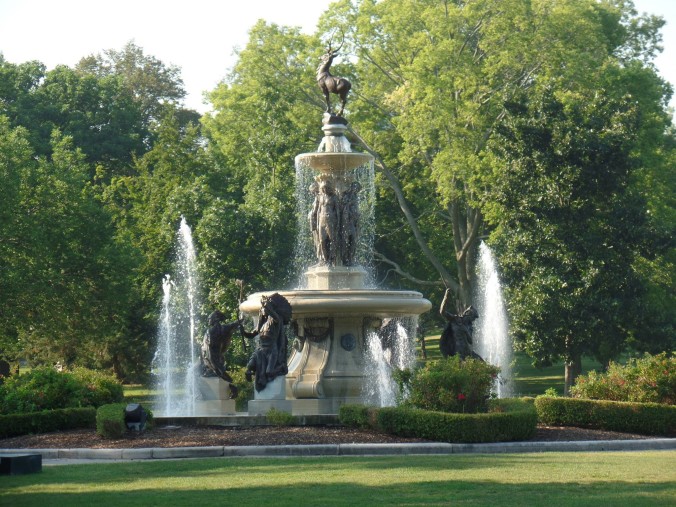The Corning Fountain was installed in the park in 1899 by John J. Corning as a tribute to his father, John B. Corning (note: no relation to the Corning Glass company). John B. was a Hartford merchant, real estate investor, bank director and a co-founder of the Pearl Street Congregational Church. He owned a dry goods store and auction house on Main Street and, like his father and grandfather, was a church deacon. John J. was a successful broker in New York who retained his love for his hometown of Hartford. Both Cornings are buried in the family plot at Spring Grove Cemetery.
The fountain’s location was chosen as part of a grand entranceway to the park and the State Capitol grounds for visitors arriving to Hartford via the train station.
The 30-foot-tall fountain is made of marble and stone and is topped with the figure of a stag (or “hart,” for Hartford) and four native maidens surrounded by corn stalks, representing Hartford’s agricultural history.
Around the base are four larger-than-life sculptures depicting members of the local Saukiog tribe, the city’s first inhabitants. Together, the figures form a somewhat-idealized narrative of the complicated relationship between the native residents and the English newcomers:
- The first figure, a Saukiog youth, is seen spear-fishing.
- The next figure represents a chief scanning the horizon, looking for the approaching European settlers.
- The third Saukiog figure, holding a hatchet aloft, represents the battles between the settlers and the natives.
- The final figure shows a chief kneeling on his hatchet and extending a peace pipe to the English settlers.
The fountain was designed by John Massey Rhind, a noted Scottish sculptor who designed a number of statues and monuments around the country. Here in Connecticut, he also produced the sculptures at the New Haven county courthouse.
Photo by George A. Chien

